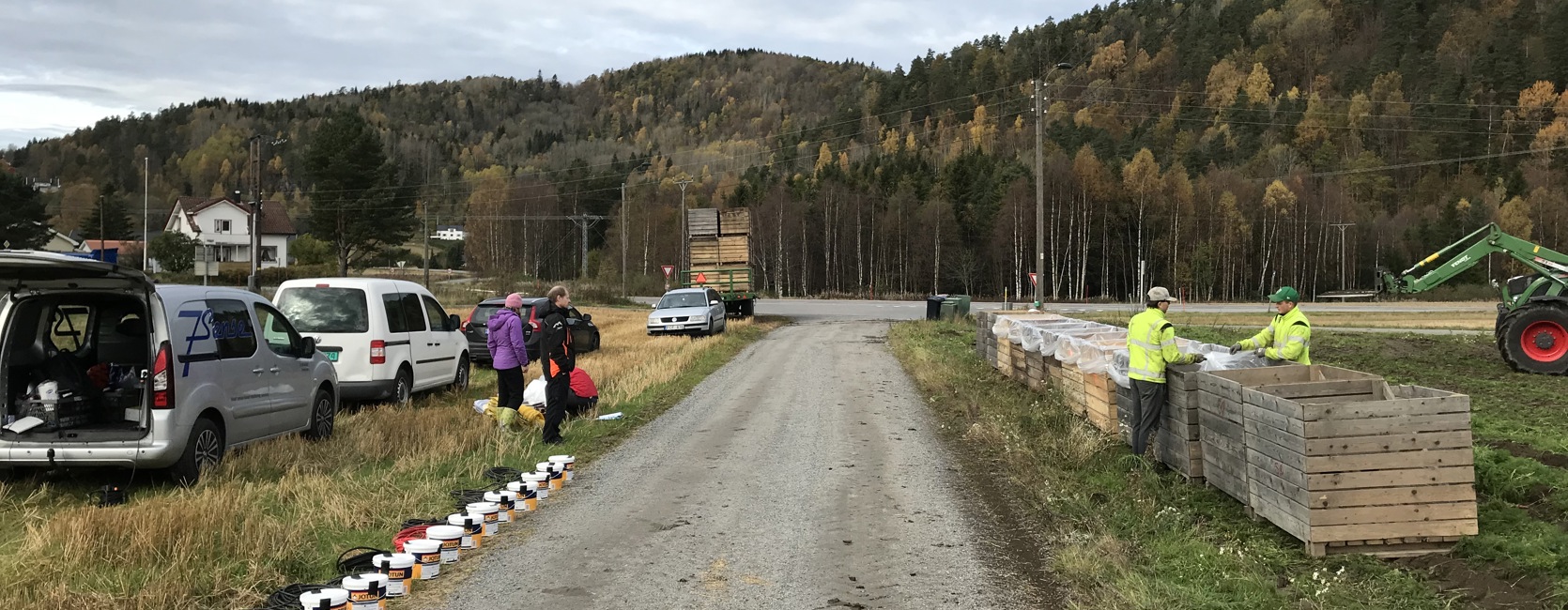Research project: OptiRoot
OPTIROOT - a research program for optimization of crop quality and storage conditions to reduce loss during long-term storage of root vegetables in Norway. With our storage sensors, 7Sense took part in the study by keeping track of temperature, relative humidity, and CO2. Additionally, we provided labor for data analysis and practical installation tasks
Reducing yield loss along the supply chains is important for resource sustainability in vegetable, potato and fruit production. Norwegian potatoes and root vegetables are typically stored 6 to 8 months before consumption, often resulting in 20-30% loss post harvest. Research into reduction of storage has therefore become an important issue at NIBIO and a number of ongoing projects in more horticultural produces are initiated. For a profound understanding on the factors causing NIBIO cooperated with a number of other research institutes as Nofima, Sintef and NMBU.
In OptiRoot 26 producers, refrigeration-technology companies, sensor developer, grower’s organisation, agricultural advisory service, and three research institutes cooperated and conducted research to improve storage quality of carrot, swede and celeriac.
The research focused on:
- Fertilizer/Boron deficiency affects the storage quality of root vegetables and amount, methods of application, and timing of boron are studied in swede and celeriac.
- Interaction between storage conditions/functions and produce quality of the root vegetables through mapping of technical features of 27 storages.The storage conditions recorded are relative humidity, air movement, temperature in boxes and storages, and physical features of storages. In addition, the physiological and health status of the produces are assessed one week before harvest, postharvest and post-storage. The prevalence of fungal diseases or disorders varied from region to region and between storages.
- Effects of pre-storage wound healing are tested using seven different temperature strategies (direct to 0° C vs. down 0.2° C per day vs. 1° C per day) and low/high humidity in carrot (2016/17/18), celeriac and swede (2017/18/19). Preliminary results show that wound healing reduced loss due to fungal infections in carrot
- CO2 concentration, temperature and relative humidity were recorded over time inside carrot storage bin liners with different numbers of perforations. An initial screening indicated a positive correlation between number of holes and number of fresh roots. As a post storage method, coating of swede with chitosan oligomers will be tested to inhibit growth of post-harvest pathogens.
In conclusion, OptiRoot have gained good progress and promising preliminary results by connecting data on biology and technology for reduction of loss during long-term storage.
The key to success in OPTIROOT is based on a strong coordination between biological knowledge and technical insight connected to production, prestorage, storage and packaging.
With our storage sensors, 7Sense took part in the study by keeping track of temperature, relative humidity, and CO2. Additionally, we provided labor for data analysis and practical installation tasks.
Partners in the program:
Toten Kålrotpakkeri, Hoppestad Gård, Ihla Samdrift DA, Sverre Huseby Furu Gård, Tor Henrik Viken, Jæren Gulrot AS, Lundstad Grønt AS, Valborg Alhaug, Bru gard, Morten Bilstad, Helge Sveinsvoll, Wiig Gartneri AS, Lågen Gulrot AS, Øyen samdrift, Simon Helge Dahl, Ole M. Tomter, Tømmerås gård, Forsetlund Nordre gård, Karl E. Rosnæs, Lars Rustad, Huuse Landbruk AS, Jøran Narum, Røstad Øvre, Egil Minde, Vangberg Gartneri, Smøla Produksjonslag, NORGRO AS, Trondheim Kulde AS, Winns AS, Biochos AS, 7Sense Products AS, Norsk Landbruksrådgiving, Gartnerhallen SA and Tommen Gram Folie AS. Research partners are NIBIO, SINTEF, NOFIMA, NMBU and University of Århus, Danmark.
Funding source: Norwegian Research Council and Gartnerhallen SA
Research period: 01.08.2016 - 31.12.2019


